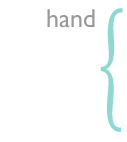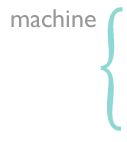LEARN // RUG WEAVING
The style of weaving has a very large impact on the price of the area rug. Typically, area rugs fall into a two main categories: Handmade or Machine made.
| Hand | ||
 |
 There are two basic classifications of hand weaving: flat and knotted-pile. The earliest rugs, made many centuries before the Christian era, were flat-surfaced weaves. These include tapestries, embroidery, brocading, soumaks and kilims. The fundamentals of flat weaving and hand-knotting have changed very little since the 11th Century, with some knot styles remaining indigenous to certain geographic areas. There are two basic classifications of hand weaving: flat and knotted-pile. The earliest rugs, made many centuries before the Christian era, were flat-surfaced weaves. These include tapestries, embroidery, brocading, soumaks and kilims. The fundamentals of flat weaving and hand-knotting have changed very little since the 11th Century, with some knot styles remaining indigenous to certain geographic areas.
The oldest of the flatweaves is probably tapestry, which was practiced in ancient Greece and is still in use today. Soumak weaving originated in the Middle East as early as the 7th Century and is still practiced in Caucasia today. Brocading and embroidery are usually done on looms similar to those used for tapestry, and techniques may be combined. The characteristic feature of knotted-pile rugs is the knotting and fastening of extra strands of yarn into a foundation weave to form a dense layer of loops that completely cover the foundation on one side. The foundation of a rug is a grid of parallel yarns called “warp” (lengthwise) and “weft’ (crosswise), creating a rectangle on a loom frame. A row of knots is tied to pairs of the warp and the weft is passed through alternating sides of the warp, then tightly compressed against the knots and another row is formed. The number of knots per square inch is a determinant of rug quality. The fineness of the weave depends upon the thickness of the warps and their proximity to one another. Although wool is often used for warp, cotton is more common because of its smooth surface and its resistance to stretching. Among knotted rugs, there are distinctions made between horizontal and vertical looms. The horizontal types are generally used by nomadic families and for smaller rugs. They are made by driving stakes in the ground to hold the warp and weft, and non-rectangular rugs often result from the frequent moves and uneven tension of yarn. All large rugs are made on vertical looms and all mechanical weaving is done on vertical looms with steel frames. |
|
|
|
||
| Machine | ||
 |
The more popular mechanical weaving styles are:
Wilton - These rugs and carpets are noted for their sharply delineated patterns and textures. They may also achieve such hand-carved effects as sculptured or embossed textures by varying pile heights or combining cut and uncut pile yarns. The weaving system is an adaptation of the classic Jacquard system. Today, the high-speed Belgian-made Van der Wiehle looms are the standard for the world-wide rug-making industry. Axminster - This system of weaving offers unlimited design possibilities by mimicking the hand-tufting method used in China. Similarly, the Axminster relies on control over each individual tuft of yarn. Therefore, there are no limitations on pattern complexity and color selection. Tufted - A contemporary outgrowth of the knotted type is the tufted rug. These make use of a fabric foundation and the individual tufts are driven through the foundation by hundreds of mechanical “guns” and then are sealed on the back by application of liquid latex. Properly done, the finished appearance can be very similar to that of a knotted rug. The tufted system is used in making the majority of broadloom carpets and also for many area rugs. |
|